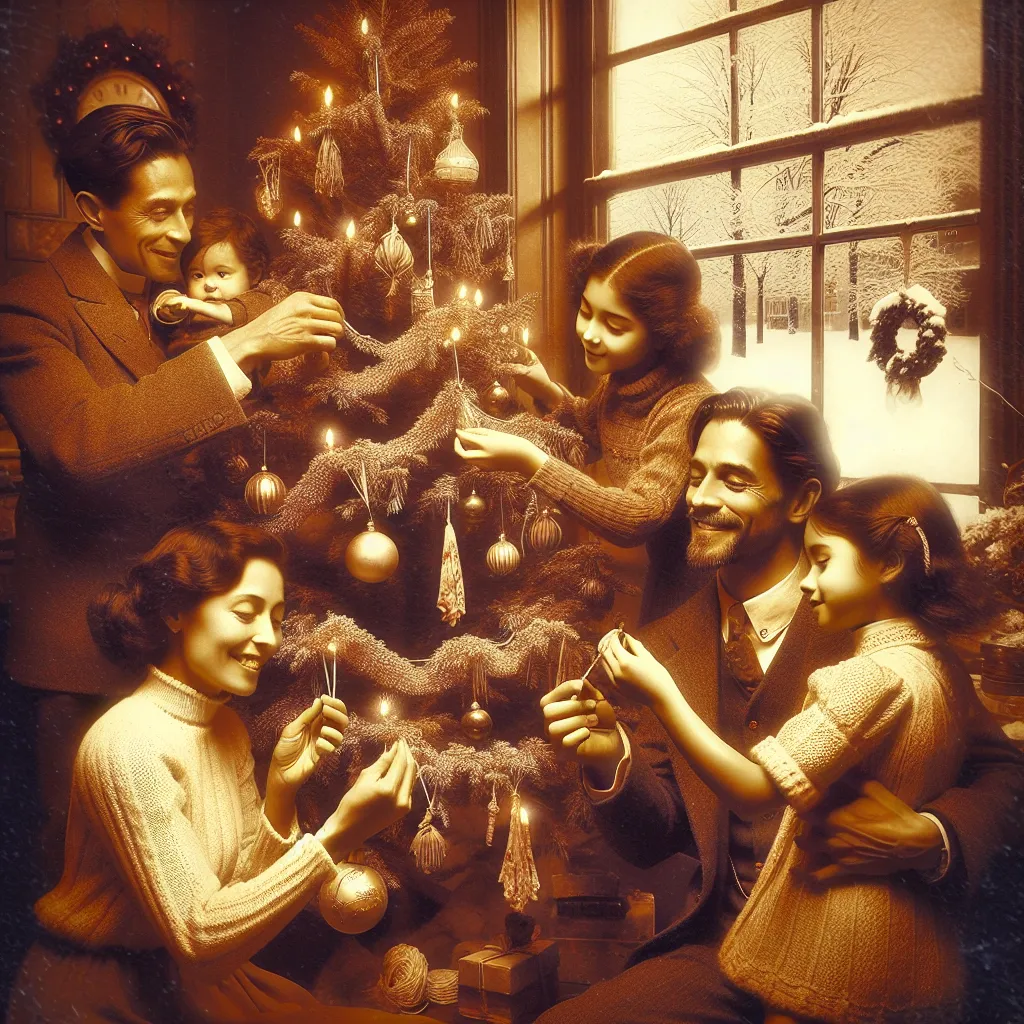Origins of Traditional Holiday Ornaments
The history of holiday ornaments dates back to ancient times, with the tradition of decorating trees and homes during festive seasons originating from various cultures around the world. The origins of traditional holiday ornaments can be traced to the customs of early Egyptians, Romans, and even the medieval Germans. In ancient Egypt, for example, tree branches were brought indoors during the winter solstice as a symbol of life and rebirth. The Romans adorned their homes with greenery during Saturnalia, a festival dedicated to the agricultural god Saturn. Meanwhile, medieval Germans are credited with popularizing the use of evergreen trees as a symbol of hope and everlasting life during the winter season.
These early customs laid the foundation for the ornaments we use today. The concept of hanging ornaments on trees can be linked to the 16th century in Germany, where people decorated fir trees with apples, nuts, and other items as part of the tradition. Over time, this practice evolved, leading to the creation of delicate glass ornaments in the town of Lauscha in the 19th century. These glass baubles, initially handcrafted and later produced on a larger scale, became a staple of holiday décor worldwide.
As holiday traditions spread across continents, diverse cultures incorporated their own unique ornaments, leading to the wide array of decorations seen today. From hand-painted eggs in Eastern Europe to intricate Chinese paper ornaments, the global tapestry of holiday decorations reflects the rich tapestry of human creativity and tradition.
Evolution of Christmas Tree Decorations
Throughout history, the evolution of Christmas tree decorations has reflected the cultural and technological advances of societies worldwide. The tradition of adorning evergreen trees dates back to ancient civilizations, such as the Egyptians and Romans, who used greenery to celebrate winter festivals. However, the modern custom of decorating Christmas trees with ornaments can be traced back to 16th-century Germany, where people decorated trees with fruits, nuts, and paper flowers. As time progressed, the ornaments evolved to include handcrafted glass baubles, candles, and tinsel.
In the 19th century, the industrial revolution led to mass production of Christmas ornaments, making them more accessible to the general population. The introduction of electric lights in the 1880s further revolutionized tree decorations, replacing the hazardous use of candles. This pivotal moment paved the way for the elaborate light displays seen in contemporary Christmas celebrations.
As the world entered the 20th century, the variety of ornaments expanded to encompass a wide range of materials and designs. From delicate hand-blown glass ornaments to whimsical plastic figurines, the evolution of Christmas tree decorations reflects changing tastes and artistic trends. Today, ornaments come in various shapes, sizes, and themes, catering to diverse cultural and religious traditions.
In recent years, there has been a resurgence of interest in vintage and handmade ornaments, emphasizing a return to traditional craftsmanship and unique, personalized decorations. The evolution of Christmas tree decorations continues to mirror the ever-changing landscape of global traditions and consumer preferences, ensuring that this beloved holiday tradition remains a vibrant and cherished part of the festive season.
Cultural Significance of Festive Ornaments
Holiday ornaments have a rich history, deeply intertwined with cultural traditions and symbolic significance. Across various cultures and time periods, festive ornaments have served as more than just decorative items, holding profound meaning and embodying beliefs, values, and rituals. The use of ornaments to adorn homes and celebratory spaces dates back to ancient civilizations, where they were often fashioned from natural materials such as evergreen branches, fruits, and nuts. These early decorations symbolized themes of fertility, prosperity, and the cycle of life, reflecting the spiritual and cultural values of the people.
In the context of Christianity, the Christmas tree ornament has evolved to become a central element of holiday traditions. The custom of decorating an evergreen tree with ornaments traces its roots to 16th-century Germany, where such adornments were laden with religious symbolism. The ornaments represented biblical themes, such as apples as the fruit of knowledge, and candles as the light of Christ. Over time, the tradition spread throughout Europe and eventually to other parts of the world, evolving to encompass a wide array of decorative symbols, from angels and stars to nativity scenes, each carrying its own cultural significance.
Similarly, in Jewish tradition, the menorah serves as a significant ornament during Hanukkah, the Festival of Lights. The menorah holds deep cultural and religious symbolism, representing the miracle of the oil that burned for eight days and nights. Its presence as an ornament not only decorates the space but also carries the historical and spiritual significance of the holiday, connecting individuals to their heritage and faith.
Furthermore, in many Asian cultures, decorative ornaments are integral to various festive celebrations. For example, during Chinese New Year, red and gold ornaments adorned with symbols of good luck and prosperity are prominently displayed. These ornaments, such as paper lanterns, firecrackers, and symbolic imagery, carry centuries-old cultural meanings and traditions, infusing the festive atmosphere with deep-rooted symbolism and cultural significance.
In summary, holiday ornaments play a vital role in expressing cultural identity, values, and traditions. They are not merely decorative items but are imbued with centuries of cultural and symbolic significance, serving as powerful representations of shared beliefs and customs. As we adorn our homes with festive ornaments, we also honor the rich cultural heritage and traditions that have shaped these timeless symbols of celebration and unity.
Holiday Ornament Trends Through the Ages
Holiday ornaments have been a cherished part of seasonal celebrations for centuries, and their designs have evolved significantly over time. The history of holiday ornaments is a rich tapestry of shifting trends, reflecting changes in culture, art, and technology throughout the ages.
Centuries ago, holiday ornaments were often handmade and crafted from natural materials such as fruits, nuts, and paper. In the 19th century, the tradition of decorating Christmas trees became popular, leading to an increased demand for ornaments. During this time, delicate blown glass ornaments from Germany became highly sought after, showcasing intricate designs and vibrant colors.
As the 20th century dawned, new materials and manufacturing techniques transformed the holiday ornament landscape. The Art Deco movement influenced ornament design, leading to sleek and geometric shapes. In the mid-1900s, tinsel became a popular addition to trees, reflecting the space-age era’s fascination with shimmering metallics.
Fast forward to the present day, and holiday ornament trends continue to evolve. Contemporary ornament styles range from minimalist and nature-inspired designs to retro and nostalgia-inducing pieces. Furthermore, the rise of eco-conscious consumerism has led to a demand for sustainable and ethically sourced ornaments made from recycled materials.
In the digital age, technology has also made its mark on holiday ornaments, with LED lights, interactive ornaments, and even personalized 3D-printed decorations becoming increasingly popular.
The history of holiday ornament trends through the ages showcases an ever-changing landscape of creativity and innovation. From the humble origins of handmade trinkets to modern, tech-infused designs, holiday ornaments continue to capture the spirit of the season while reflecting the broader trends of the times.

